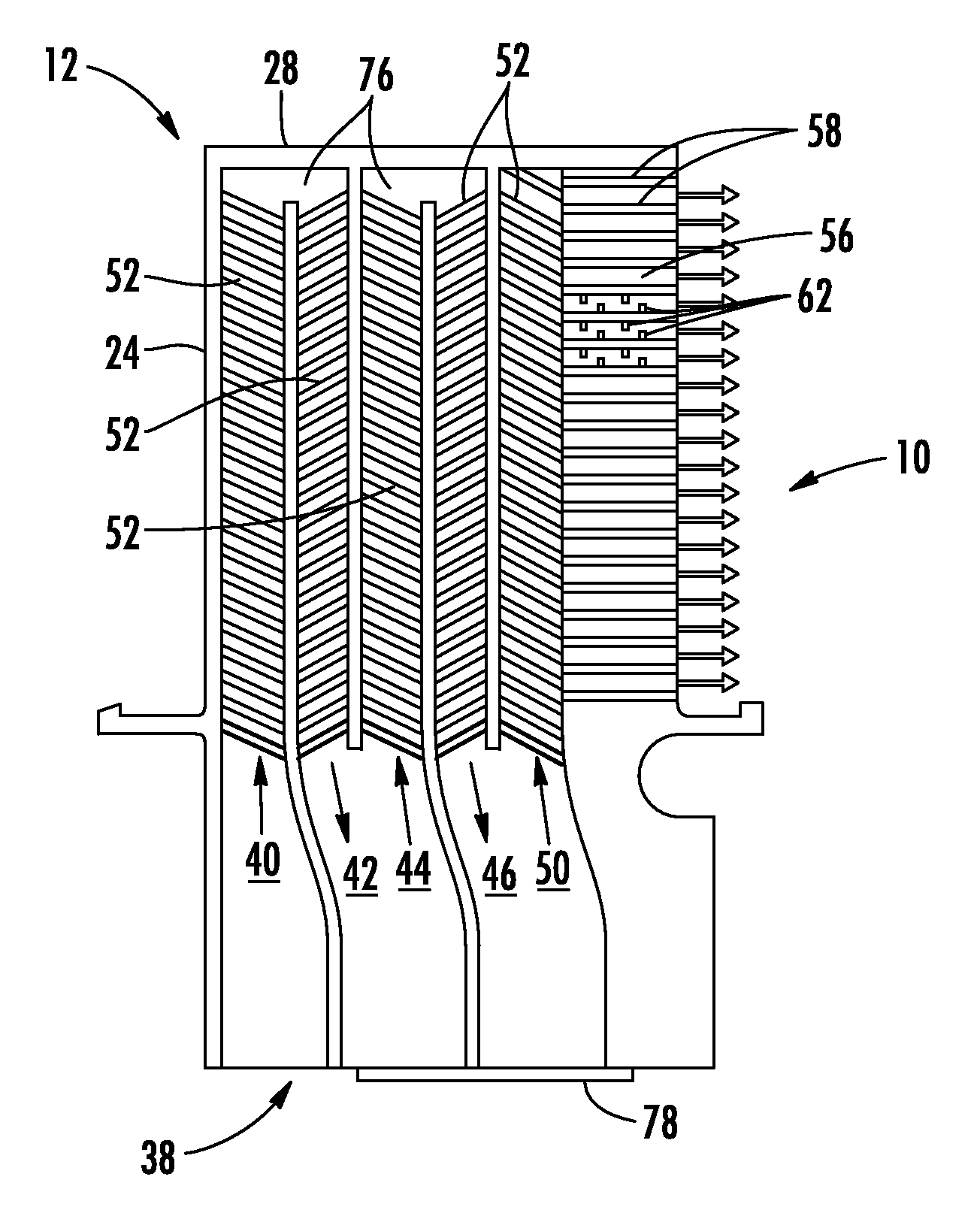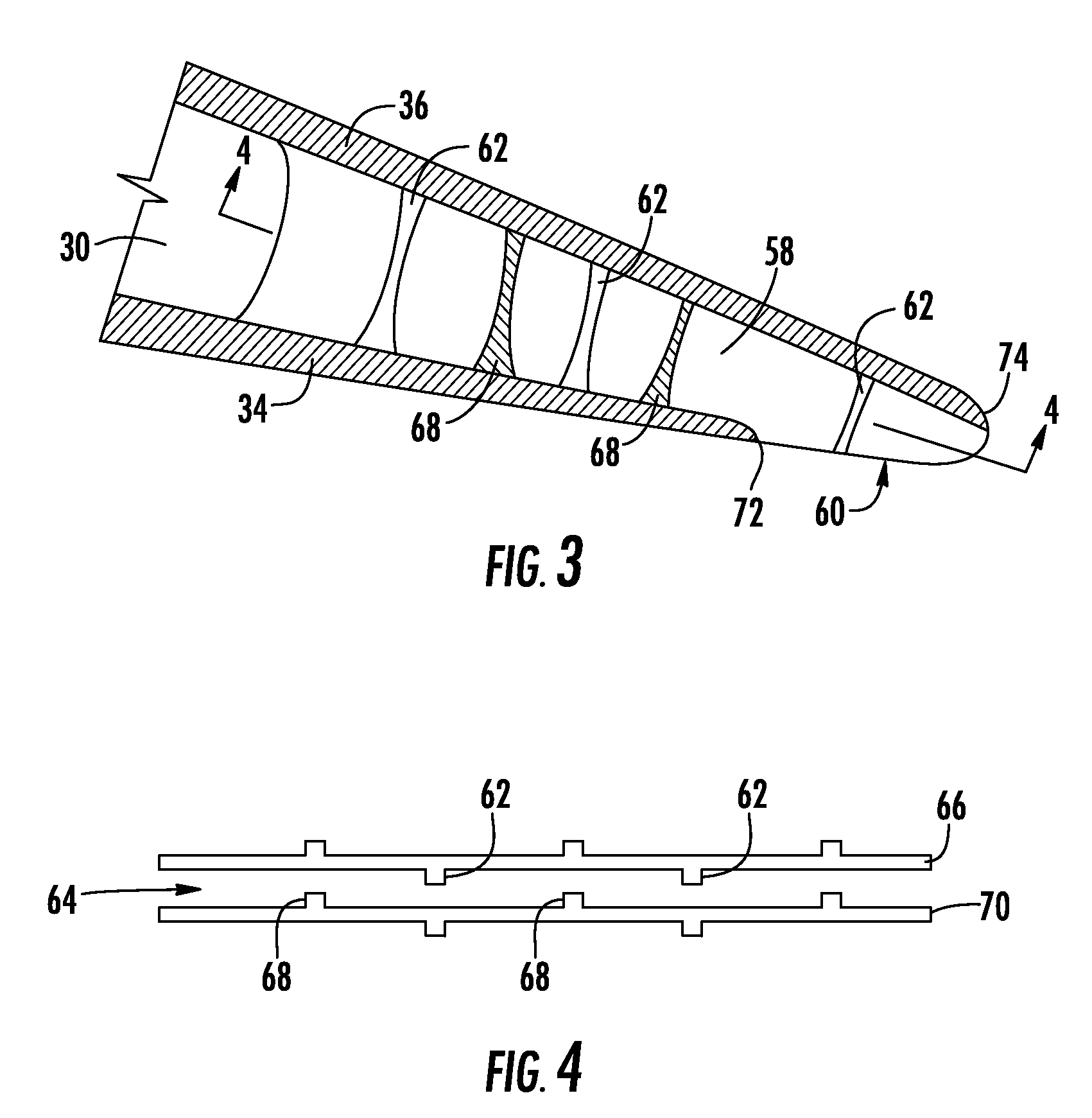Turbine blade with micro channel cooling system
a cooling system and turbine blade technology, applied in the field of turbine blades with micro channel cooling systems, can solve the problems of insufficient cooling to split the total cooling flow, design problems, and failures, and achieve the effects of reducing cooling flow, reducing cross-over holes, and increasing the effectiveness of multi-pass serpentine cooling circuits
- Summary
- Abstract
- Description
- Claims
- Application Information
AI Technical Summary
Benefits of technology
Problems solved by technology
Method used
Image
Examples
Embodiment Construction
[0024]As shown in FIGS. 1-5, aspects of the invention is directed to a turbine airfoil cooling system 10 for a turbine airfoil 12 used in turbine engines. The airfoil 12 can include a generally elongated, hollow airfoil body 20 formed by an outer wall 22 extending chord wise from a forward leading edge 24 to a rearward trailing edge 26, a tip section 28 at a first span wise end, a root 30 coupled to the airfoil 20 at an end generally opposite the first tip end 28 span wise for supporting the airfoil 20 and for coupling the airfoil 20 to a disc (not shown), and a cooling system 10 formed from at least one cavity 32 in the elongated, hollow airfoil 20 positioned in internal aspects of the generally elongated, hollow airfoil 20. The outer wall 22 can include a concave pressure side wall 34 and a convex suction side wall 36 separated rearwardly by the trailing edge 26. The cooling system 10 has particular application to blades having a low cooling flow rate, such as blades coated with a...
PUM
 Login to View More
Login to View More Abstract
Description
Claims
Application Information
 Login to View More
Login to View More - R&D
- Intellectual Property
- Life Sciences
- Materials
- Tech Scout
- Unparalleled Data Quality
- Higher Quality Content
- 60% Fewer Hallucinations
Browse by: Latest US Patents, China's latest patents, Technical Efficacy Thesaurus, Application Domain, Technology Topic, Popular Technical Reports.
© 2025 PatSnap. All rights reserved.Legal|Privacy policy|Modern Slavery Act Transparency Statement|Sitemap|About US| Contact US: help@patsnap.com



